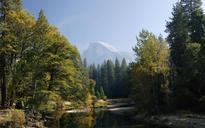Introduction
In the world of art and photography, few ideas are as appealing as abstract portraits. These creative expressions mix imagination with reality, developing a vibrant tapestry where feelings, identity, and visual appeals converge. Whether through self-portrait photography or reflective photography, abstract portraits invite audiences into an area that challenges understandings and evokes deep reflections on identity in art. This short article will check out the various facets of abstract pictures, their significance in modern art, and how they can transform both the artist's vision and the viewer's experience.
Abstract Pictures: Where Imagination Meets Reality
Abstract pictures stand at the crossway of creativity and authenticity. They permit artists to explore their innermost sensations while all at once using a new lens through which audiences can interpret those emotions. Unlike standard picture styles where realism rules supreme, abstract pictures accept distortion, color adjustment, and other creative techniques that go beyond simple representation. This category motivates self-expression in art by providing an open canvas for individuality.
The Development of Abstract Portraits
Over the years, abstract pictures have developed substantially. At first rooted in movements like Expressionism and Surrealism, they have actually branched off to incorporate various forms of aesthetic photography that focus on feeling over representation. Artists like Pablo Picasso and Wassily Kandinsky laid the groundwork for what would later on become an abundant tapestry of contemporary interpretations.
A Short History of Abstract Art
Early 20th Century Movements: The inception of abstract art can be traced back to movements such as Cubism. Expressionism: Artists started to focus on individual feeling instead of objective reality. Postmodern Reinterpretations: Contemporary artists have actually taken these concepts even more, typically blending digital mediums with conventional techniques.Understanding Aesthetic Photography in Abstract Portraits
Aesthetic photography plays a vital role in abstract portraits by stressing beauty and visual appeal over traditional compositional guidelines. This method welcomes audiences to engage with the work in a different way-- motivating individual interpretation instead of determining meaning.
Elements of Visual Photography
- Color Palettes: Lively or muted colors can stimulate various emotional responses. Lighting Techniques: Shadows and highlights create depth and intrigue. Composition Styles: Unconventional framing can draw attention to particular elements within the portrait.
Self-Portrait Photography as a Medium for Expression
Self-portrait photography is an effective tool for artists wishing to explore their identity through abstract means. By utilizing their own visage as a canvas, artists can embody different feelings or ideas while reflecting on their individual narratives.
Techniques in Self-Portrait Photography
Symbolic Imagery: Incorporating objects or environments that show individual experiences. Manipulation of Perspective: Modifying angles to convey different significances or feelings. Digital Alteration: Utilizing software application tools to transform images beyond recognition.Contemplative Photography: A Journey Within
Contemplative photography motivates artists to decrease and assess their surroundings before capturing an image. In the realm of abstract pictures, this practice cultivates much deeper connections between the subject and emotional expression.
Steps for Practicing Reflective Photography
Find a quiet space for introspection. Observe your environment without judgment. Capture minutes that resonate with your inner thoughts.Faceless Pictures: An Expedition of Identity
Faceless portraits challenge standard representations of identity by removing facial functions entirely. This method welcomes audiences to connect with wider styles such as privacy, universality, or perhaps vulnerability.
Creating Faceless Portraits
- Utilize silhouettes against dynamic backgrounds. Experiment with props that obscure facial functions while conveying emotion. Focus on body movement and posture to reveal sensations without facial cues.
The Function of Identity in Art
Identity is at the core of all creative expression; it shapes how we perceive ourselves and each other within society. In abstract pictures, this style becomes particularly poignant as artists browse complicated layers of self-representation.

Exploring Identity Through Art
Cultural Impacts: How heritage impacts artistic choices. Personal Experiences: Showing life occasions through creative outlets. Social Commentary: Attending to social problems through identity-focused works.Fine Art Photography vs Standard Picture Styles
While conventional picture designs focus on natural representations, fine art photography welcomes abstraction as an essential element of expression-- offering limitless opportunities for creativity.
Key Differences Between Art Photography and Conventional Styles
|Element|Fine Art http://reflectivejourney363.lucialpiazzale.com/the-allure-of-large-canvases-in-contemporary-interior-design Photography|Traditional Picture Styles|| --------------------------|--------------------------------|--------------------------------|| Purpose|Creative expression|Realistic representation|| Methods|Abstract approaches|Requirement postures|| Analysis|Open to viewer understanding|Guided by artist intention|
The Intersection In between Abstract Portraits and Interior Design
Abstract pictures can function as striking focal points within interior decoration areas-- transforming walls into canvases that show personal taste and style.
Incorporating Abstract Art into Home Decor
Choose strong pieces to produce statement walls. Match color pattern with surrounding decoration for cohesion. Use varying sizes for vibrant visual interest throughout spaces.Creating Your Own Abstract Portraits
Ready to dive into developing your own abstract pictures? Here's a detailed guide:
1. Gather Inspiration
Explore existing works from prominent photographers or painters who inspire you-- this could be done through social media platforms like Instagram or Pinterest!
2. Pick Your Medium
Decide whether you want your portrait captured through digital methods or conventional painting approaches; each has its special advantages!
3. Plan Your Composition
Sketch out ideas about what aspects you 'd like included-- an easy strategy assists enhance the imaginative process!
4. Try out Techniques
Don't hesitate! Try using different cameras/settings/lighting strategies if you're photographing-- or brush strokes/colors if painting!
FAQs About Abstract Portraits
What are abstract portraits?
Abstract pictures are artistic representations that focus on emotional expression over reasonable representation, making use of colors, shapes, and forms to communicate sensations instead of specific likenesses.
How do I get going with self-portrait photography?
Begin by explore lighting conditions in your home studio or outdoors; use mirrors tactically! Think about incorporating props that reveal something about yourself too!
What role does identity play in abstract art?
Identity works as fundamental material for many artists; it's typically reflected through themes associated with culture & & personal experiences-- and checked out deeply by means of innovative techniques within abstraction itself!
Can I use digital tools for developing fine art photographs?
Definitely! Digital change is widely accepted amongst contemporary artists who use software application like Adobe Photoshop & & Lightroom when crafting their piece-- accepting innovation opens new opportunities for creativity!
Are faceless pictures considered part of the abstract genre?


How do I integrate abstract art into my home decor?
Select pieces that resonate personally while ensuring they harmonize aesthetically within existing areas-- think about size variations & & color palettes when preparing positionings too!
Conclusion
Abstract portraits represent an interesting merging between imagination and truth-- a world where aesthetic photography meets profound self-expression in art kinds previously unimagined! As we have actually checked out throughout this post-- from comprehending historical roots-- to accepting ingenious methods-- the adaptability fundamental within these developments continues motivating discussions about identity & & experience throughout varied audiences today! Whether you're drawn towards reflective practices or mesmerized by faceless portrayals-- it's clear there's far more waiting simply below surface-level analyses ... So go ahead; unleash your creativity through abstraction!